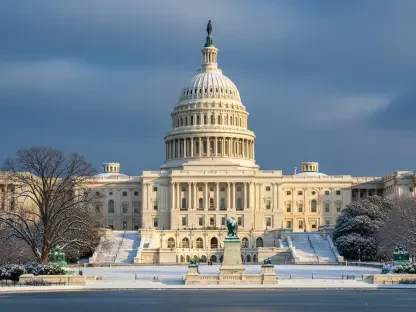In a significant legislative development, the U.S. Senate recently passed President Trump’s sweeping student loan reform bill designed to overhaul the existing landscape of educational funding. With provisions that dramatically alter repayment programs, borrowing caps, and deferment options, this controversial legislation has garnered a spectrum of reactions from policymakers, financial analysts, and educators alike. Central to the debate is the reduction of current repayment plans to just two choices: a standard plan and a newly introduced Repayment Assistance Plan. Critics are particularly alarmed by the lengthened timeline for loan forgiveness, requiring borrowers under the assistance plan to wait 30 years instead of the previously established 20-25 years. These changes have raised questions about access to higher education, potential growth in individual debt burdens, and the broader socioeconomic implications.
Key Components of the Reform
One of the bill’s most notable features is the establishment of borrowing caps, which could significantly impact future graduates’ financial planning and career choices. Graduate students now face a lifetime loan limit of $100,000, while those pursuing medical and law degrees are restricted to $200,000. Additionally, the abolition of the Graduate PLUS Program and the imposition of a $65,000 cap for Parent PLUS loans, which are notably excluded from repayment programs, have sparked widespread debate. Many express concerns that these limitations could drive students towards private loans, known for their higher interest rates, and potentially dissuade some from pursuing advanced education altogether. The bill has also drawn attention for its nuanced approach to Pell Grants, which now continue to support students in workplace training initiatives but exclude those with full university scholarships.
Though intended to promote fiscal responsibility, these measures carry possible adverse effects, particularly for prospective students from lower-income families. Critics argue that by making higher education less attainable, such reforms could exacerbate socioeconomic disparities and diminish the likelihood of obtaining a quality education. The Student Debt Crisis Center and the Student Borrower Protection Center have criticized the bill, citing its potential to increase monthly payments and question its fairness in aiding students who genuinely require financial support. These organizations warn that the bill might concentrate educational opportunities among wealthier demographics, thereby threatening to constrict the socioeconomic ladder that education traditionally supports.
Economic and Social Implications
While the bill’s proponents, such as Senator Bill Cassidy, argue that the legislation aligns with efforts to safeguard the American Dream by promoting fiscal responsibility, fostering job creation, and stimulating economic growth, dissenting voices highlight a range of concerns. There is apprehension that by restricting financial aid options, the bill unintentionally widens the gap between affluent and less affluent students, potentially leading to a decline in diversity within higher educational institutions. The economic strain on families originating from soaring education costs coupled with stricter borrowing measures could deter talent from reaching potential, affecting workforce diversity and innovation in various sectors.
As these proposed changes take center stage, debates intensify over their broader societal effects. While the bill aims to improve economic self-sufficiency, questions persist about its long-term consequences on the quality and accessibility of American higher education. The most pressing concern remains whether these reforms might discourage a significant segment of the population from pursuing further education due to heightened financial constraints. Additionally, there is substantial focus on the mental and emotional impact on students burdened by escalating debt, resulting in stress and uncertainty concerning future financial stability.
Future Considerations
The bill introduces borrowing caps, impacting financial planning for future graduates. Graduate students now face a $100,000 lifetime loan limit, while those in medical and law fields can borrow up to $200,000. The bill also abolishes the Graduate PLUS Program and sets a $65,000 cap on Parent PLUS loans, not included in repayment schemes, causing widespread debate. Critics worry these restrictions may push students towards private loans, notorious for steep interest rates, potentially deterring some from higher education. The bill also alters Pell Grants, still supporting workplace training but excluding students with full university scholarships.
While aiming for fiscal responsibility, these measures might adversely affect students from low-income families, potentially worsening socioeconomic disparities and reducing access to quality education. The Student Debt Crisis Center and Student Borrower Protection Center criticize the bill for possibly hiking monthly payments and argue it could unfairly limit educational opportunities to wealthier individuals, thereby threatening the traditional role of education as a socioeconomic equalizer.









